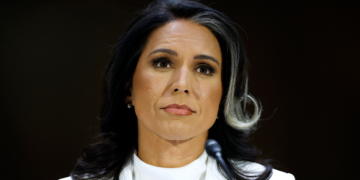Syrian President Bashar Assad arrived in China on Sept. 21 and will attend the opening ceremony of the Asian Games held in Hangzhou this year. Middle Eastern media reported that Assad’s visit to China, his first since 2004, marked a milestone in China-Syria relations. The visit also brought the Syrian crisis back to the forefront of public awareness.
From the outset, the Syrian people have been caught in the crossfire of a regional conflict driven by external forces. On the surface, it might seem that the Syrian conflict is primarily a clash between government troops and rebel forces, but the U.S. has been at the forefront of manipulating and interfering in the crisis since the outbreak. The available information indicates that the U.S. has been clandestinely backing the Syrian opposition since the establishment of the Middle East Partnership Initiative in 2006. Many U.S. think tanks have “Syria teams” that are in contact with the Syrian rebels. Also, within the Syrian National Council, there are leaders who are closely aligned with U.S. democracy-exporting initiatives. When the Syrian conflict broke out, Western media consciously framed the Assad regime as a “dictatorship” and the rebels as “champions of democracy,” and published news, often false, exclusively critical of the regime. It was precisely because of the involvement of the U.S. and various Western countries that the initially ineffectual opposition was able to grow into formidable armed forces, capable of participating in a devastating, all-encompassing civil war.
Syria was originally the Middle East’s oasis of stability, but prolonged civil conflict has transformed it from a well-governed nation into a state of chaos, significantly diminishing its prospects for viability.
First, the casualties have been heavy. According to a February 2021 U.N. report, Syria’s civil war has killed 500,000 people and displaced half the population. Second, the economic losses have been enormous. According to a report by the Syrian Center for Policy and Research, since 2011, 4 million buildings, 3,000 schools, 70% of hospitals and health institutions, 60% of infrastructure and thousands of factories and shops have been destroyed. Tens of thousands of small businesses were ruined, and many cities were rendered nonfunctional. By March 15, 2021, a full decade since the start of the Syrian crisis, the exchange rate for the Syrian pound reached 4,250:1 against the U.S. dollar, marking an 80-fold increase compared to the rate at the start of the crisis. The average monthly salary of government workers is only enough to survive for a few days. According to statistical analysis, the Syrian economy is expected to need a minimum of 30 years to return to its 2010 level.
It was only after the Assad government received assistance from Russia in 2015 that it was able to get back on its feet and recover most of its territory. When the attempt by the U.S. to overthrow the Assad government came to nothing, the U.S. reoriented its strategy to exerting an economic stranglehold. Syria’s economic reconstruction will require approximately $200 billion to $500 billion, but despite Syria’s urgently needed economic reconstruction, the U.S. Congress passed the Caesar Syria Civilian Protection Act in June 2020, sanctioning all foreign investors aiming to assist — obviously to deliberately push Syria into the abyss of isolation, hunger and poverty.
Media covered the 2019 and 2020 intensification of economic aggression by the U.S. when it burned Syrian wheat fields, resulting in a food shortage. Formerly a food-independent nation and a net food exporter, Syria’s prolonged conflict and the devastation of its fields plunged it into a severe food crisis, transforming it into a food-importing nation. As of 2021, out of Syria’s 12.4 million registered population, 4.5 million face food shortages. In addition, the U.S. is engaged in the unlawful extraction of significant amounts of Syrian oil and is responsible for activities that are causing extensive damage to Syria’s natural environment.
The above suggests the U.S. is the central player in Syria’s descent into chaos. This is one example among many in the pattern of the U.S.’ being the biggest threat to developing countries and world peace. In contrast, China has always spoken out against these injustices in Syria, promoted peace talks and done its utmost to play a constructive role. Most impressively, China repeatedly voted at the U.N. to veto many proposals by the U.S. and the West to intervene in Syria’s internal affairs.
As the situation in Syria gradually stabilizes and the Assad government regains its footing, countries have begun to ease relations with Syria. In March 2019, Syria regained its membership in the Arab League, and many Arab countries restored diplomatic relations with Syria. In May this year, Assad attended the Arab League’s summit held in Saudi Arabia. This is the first time Assad has been invited to attend an Arab League summit since the outbreak of the Syrian crisis in 2011. The return of a stable Syria and the improvement of foreign relations have shown that China’s policy of opposing foreign interference is correct and that China is a truly responsible great power.
The author is a professor at the School of International Studies at Renmin University.
Shop For Night Vision | See more…
Shop For Survival Gear | See more…
-
Sale!

Mesh Shooting Hunting Vest with Multi Pockets
Original price was: $59.99.$39.99Current price is: $39.99. Add to cart -
Sale!

Japanese 6 inch Double Edged Hand Pull Saw
Original price was: $19.99.$9.99Current price is: $9.99. Add to cart -
Sale!

Stainless Steel Survival Climbing Claw Carabiner Multitool Folding Grappling Hook
Original price was: $19.99.$9.99Current price is: $9.99. Add to cart

















































